Getting ready to hit the trails with your pup? Team Injinji Athletes Mike Wardian, Garrick Arends and Trish Arends are ultra runners with a passion for hitting the trails with their four-legged pals. We may romanticize getting out for a long run with man’s best friend, but when the paw pads meet the road, it may be more complex than anticipated. If you’re curious about getting started with running alongside your dog, let Mike, Garrick and Trish be your guides, with tested insights about essential gear, safety precautions, and tips for a smooth and enjoyable adventure. With their wealth of knowledge, you’ll feel confident and well-equipped to make every trail run with your pup a memorable experience.
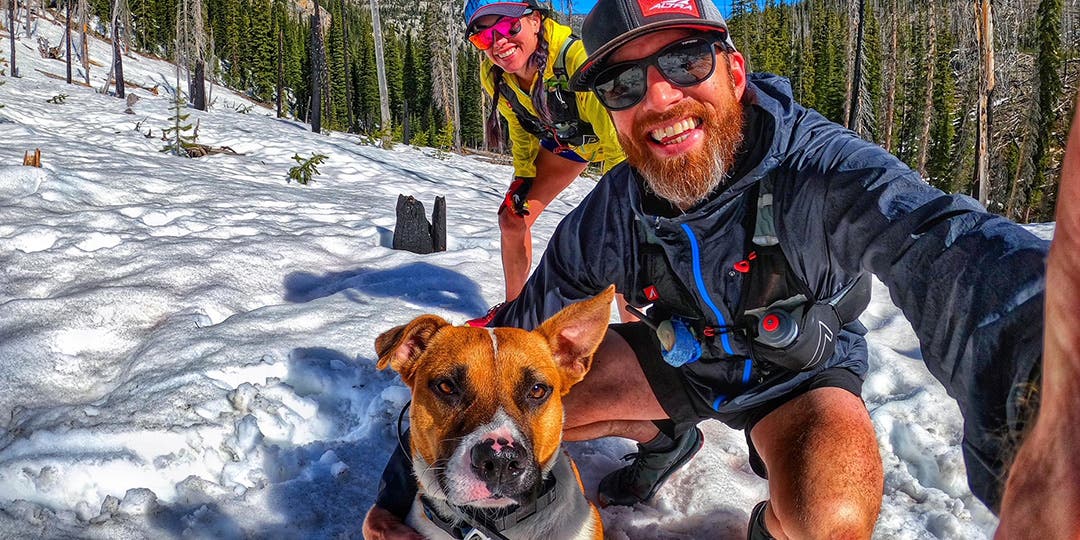
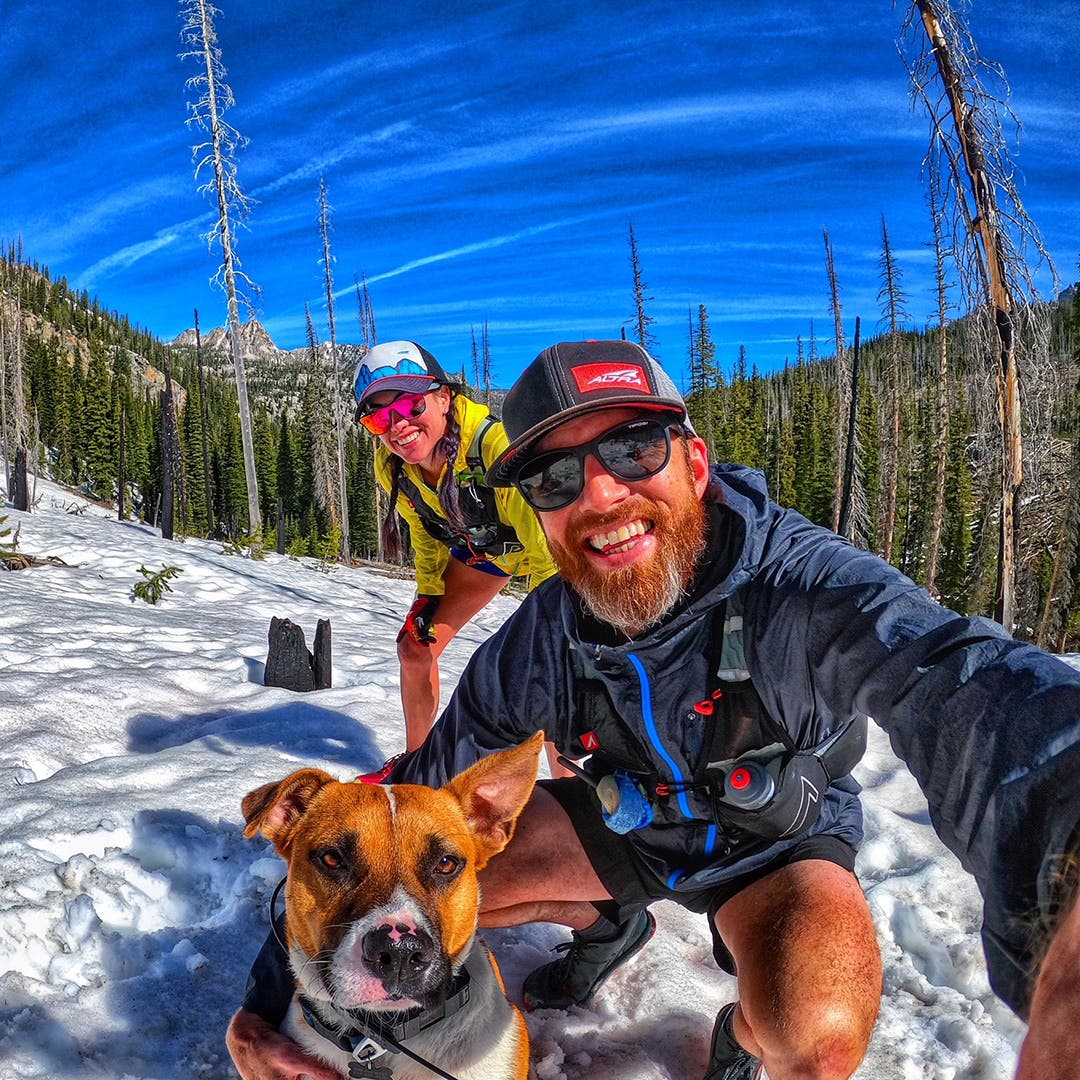
Garrick and Trish Arends with their dog Olly.
Please introduce your dog(s) and how long you've been running with them
Mike Wardian: Rosie is a ten-year-old female Vizsla & Bash (Sebastian) is a three-year-old male Vizsla. I have been running with Rosie for over nine years and Bash for one and a half years. Rosie has retired from road running and just runs on trails now.
Garrick and Trish Arends: Our pup is named Olly. He’s a Box Heeler, which is half Boxer, half Blue Heeler! He’s a rescue from Texas where he had a very, very rough life. We’ve had him for a couple of years now, and he’s living his best life! He’s a natural runner, and we run with him daily.
Dogs have different energy levels and abilities. How do you gauge your dog's readiness for trail running?
Mike Wardian: I think the best way I have found to gauge a dog's readiness for trail running is to take them hiking and see how they enjoy being on trails and how they feel after a hike. As you can imagine, running on trails is not that much different or faster than a quick hike so it will be a nice test of their interest and fitness.
Garrick and Trish Arends: We run him first thing in the morning (after a cup of coffee on the weekends haha). So, once we get out his collar and start putting our shoes on, he greets us with excitement! Sometimes he stays on the bed in the spare room and slowly comes out to say hello. On those days we’ll take it easy and go off his energy levels. He might be a full go, other times he takes his time smelling everything; either way, we let him dictate the pace.
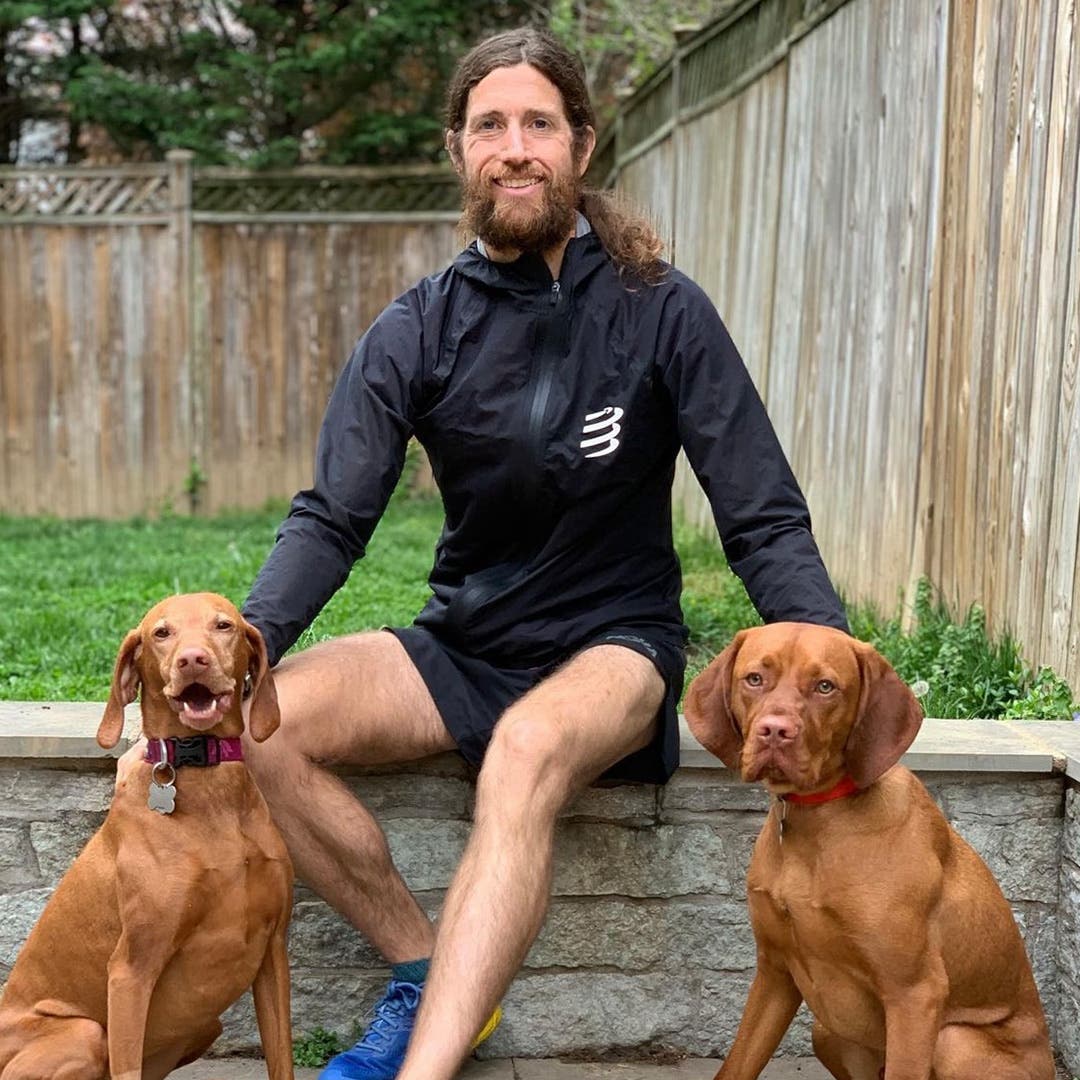

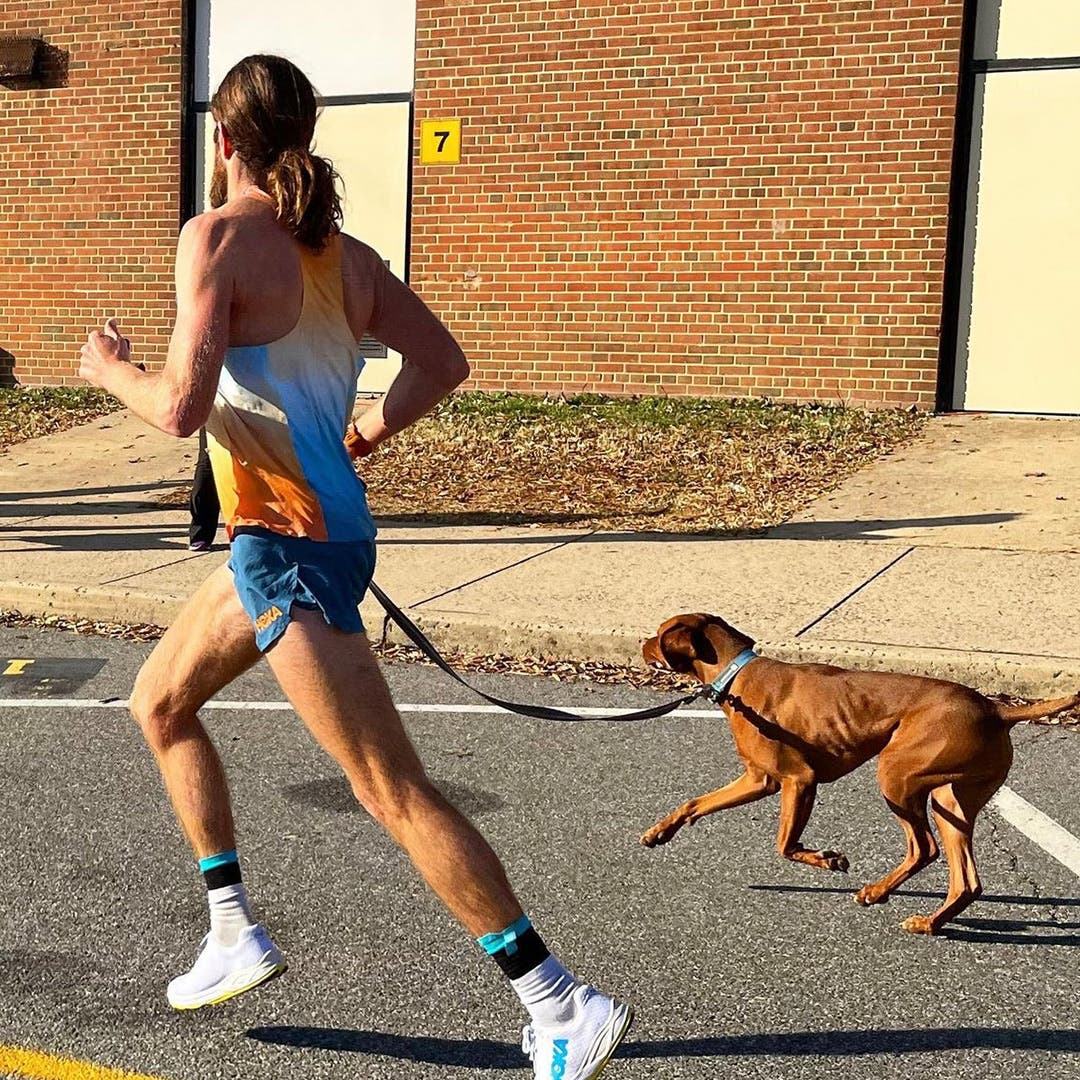

Mike Wardian with his dogs Rosie and Bash.
What are some essential gear and accessories you recommend for trail running with dogs? What considerations are there for selecting the right harness or gear?
Mike Wardian: I have a few things that I always take with me when I am trail running with our dogs. I have a sturdy collar, plastic "poop" bags, a leash, my phone, and then usually a few high-value treats and for Bash a ball of some sort. Bash loves Ball. Ball is life.
Currently, I am not using a harness, but I am using a well-made collar and a comfortable leash with a padded handle that clips.
Garrick and Trish Arends: Olly is easygoing as far as gear goes. When it's warm out, we run routes with water for him to cool off or to get a drink. He loves cold weather and doesn’t require a sweater in the winter or paw shoes, but I do know some running dogs that require those extras.
However, when it’s around zero degrees out, sometimes we’ll put a buff around his neck. Outside of that, we have a Garmin TT10 GPS collar with an Alpha 100 remote. It allows us to track him for up to a nine mile radius. We can beep, vibrate, or shock the collar to help call him back or in case he’s being naughty. The remote has an interactive screen so we can see which way he’s running, how far away, etc. With how much running we do in the backcountry, we felt it was necessary for his protection.
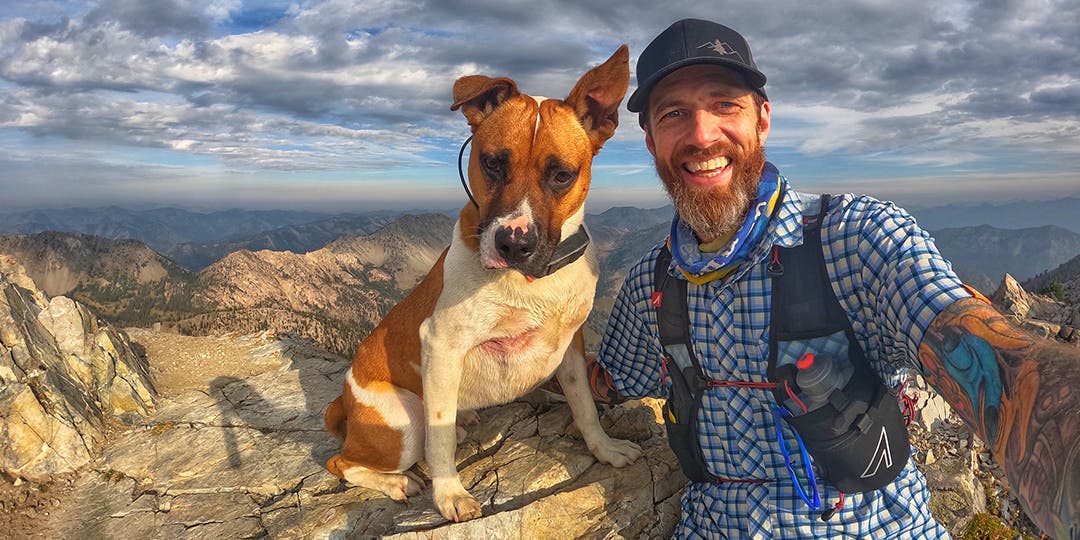
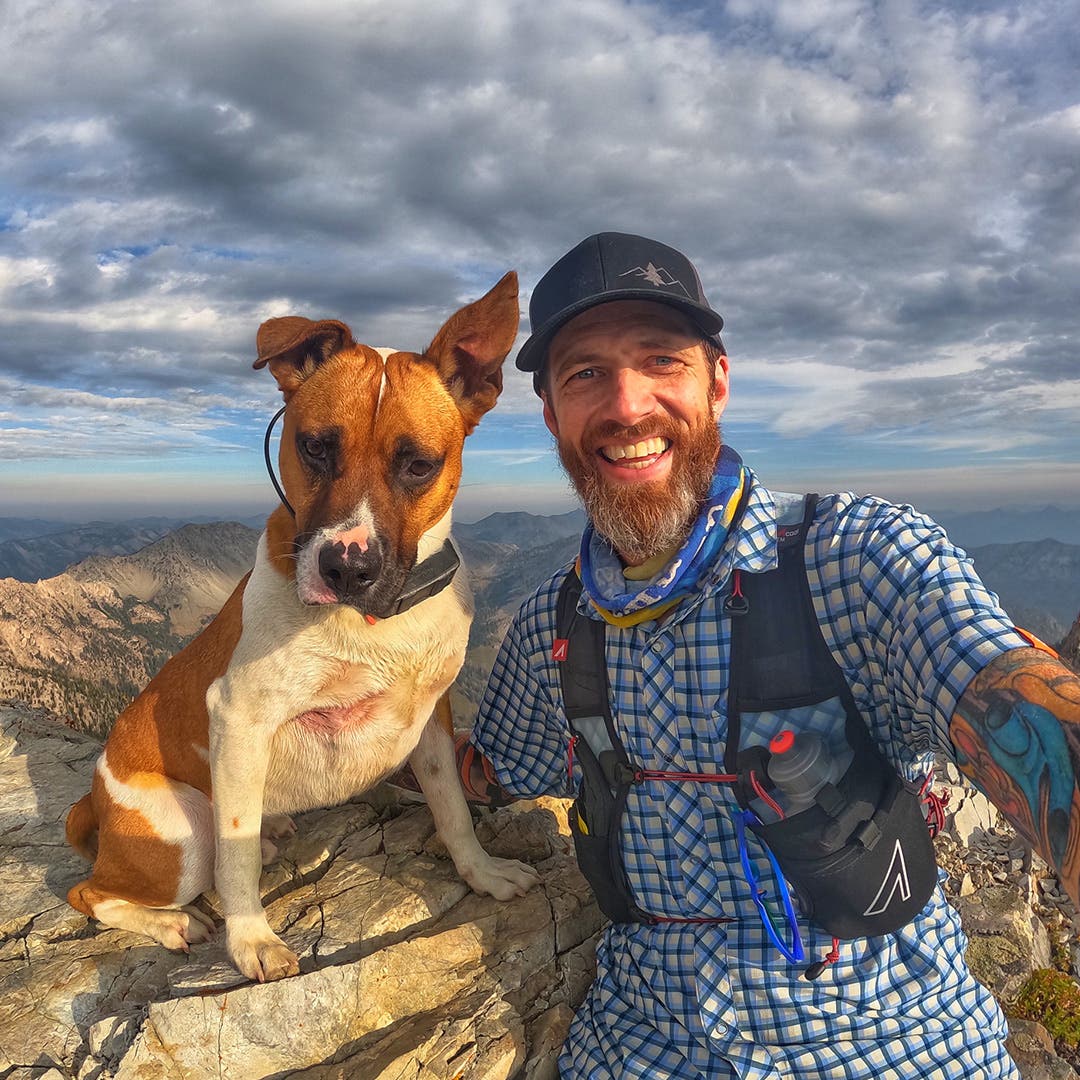
Safety is always a top concern! What precautions should dog owners take to ensure their pet’s well-being on the trails? Do you recommend teaching your dog specific basic commands or behaviors?
Mike Wardian: I think there are a lot of precautions that people can take to help ensure their dogs' safety and well-being. I think the first is if there is no water on the trail, bring water and a bowl so your dog has water and a place to drink. I think knowing what your dogs are capable of is also important and the type of trail and if dogs are allowed on the trails. We have some trails around us where dogs are not permitted, and you just don't want to set your dog up for failure. I think the most basic and important commands are: COME, HEEL (I use the word "HOLD") and GO (so you can send your dog away from you if there's a tight trail or steep section). I also think dogs should be friendly. Bash is a little bit hard to read sometimes, so anytime we run into another runner or hiker, we try to leave the trail and let the other athlete go ahead.
Garrick and Trish Arends: Having a well-behaved dog is always a must, especially if they are off-leash. This is also something that his Garmin collar/remote helps tremendously with. It’s a quick way to train your dog to behave as you want them to. If they are out of line, you can beep the collar, vibrate it or if they are being naughty, you can shock it. We have the shock turned way down, so if we have to use it it doesn’t hurt him, but it’s unexpected and he knows he’s not being a good boy and runs back to us immediately. Being in an area with a lot of wildlife, it's a must that he listens because we prefer to keep him off-leash.
Can you provide any guidance on socializing dogs on the trail, especially in areas where they may encounter other dogs or wildlife?
Mike Wardian: I think that the best way to prepare your dog for the trails is to take them on trails using leashes and build up their fitness, confidence, and experience. Then your dog will know what to expect. Our dog, Bash, knows when we are driving to the trails so he starts barking and whimpering because he knows he's going to have a blast.
Garrick and Trish Arends: We lucked out with Olly, as he loves everything. When he encounters an aggressive dog, he’d much rather run up a hill or around another pup. But when he encounters other social dogs, he gets so excited! I think it's important to take them to areas where there are other dogs, so they can get used to socializing. Dog parks or friends with dogs are a great way to help get them social. Also, if your pup is off-leash, it’s a must that they listen so as not to harass wildlife.
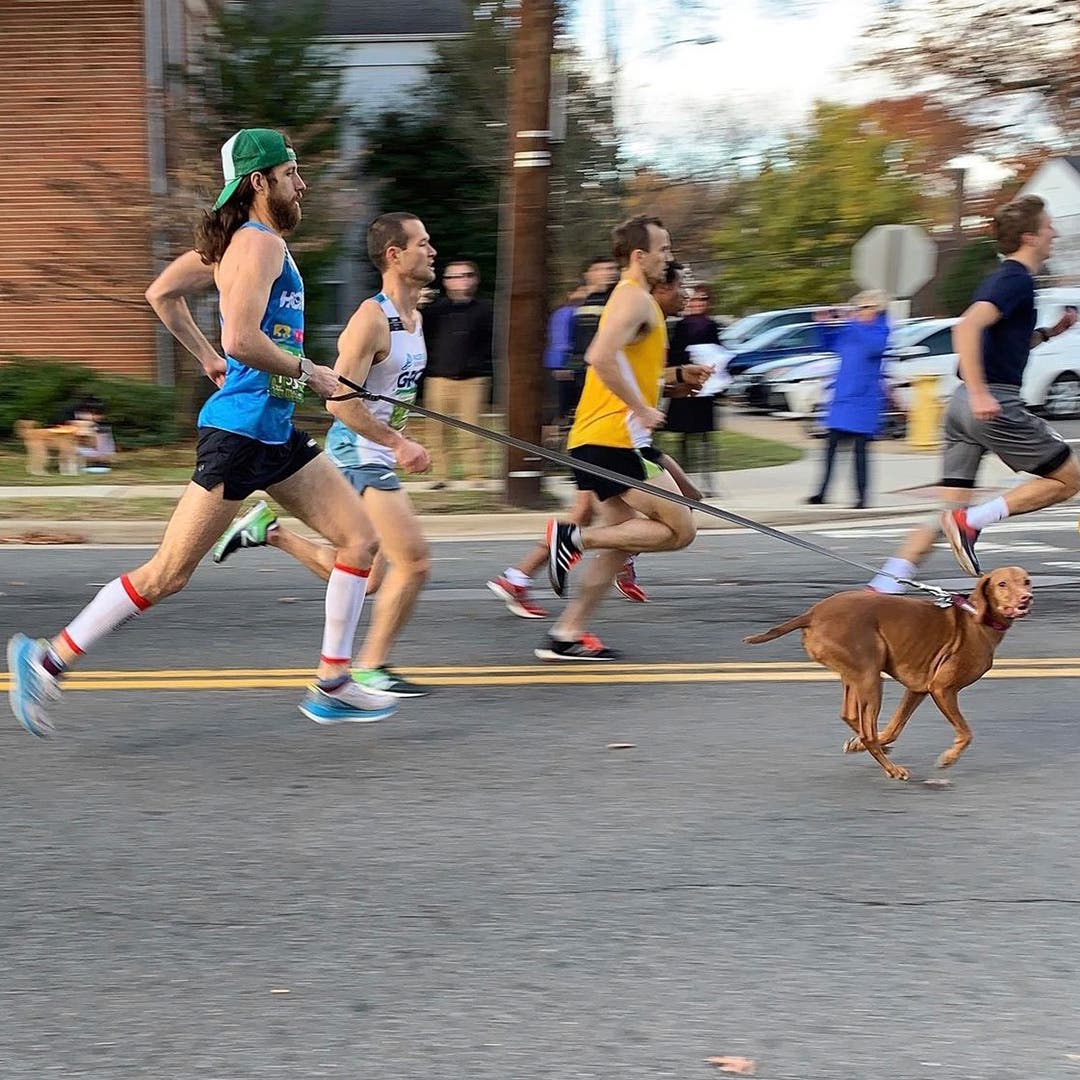

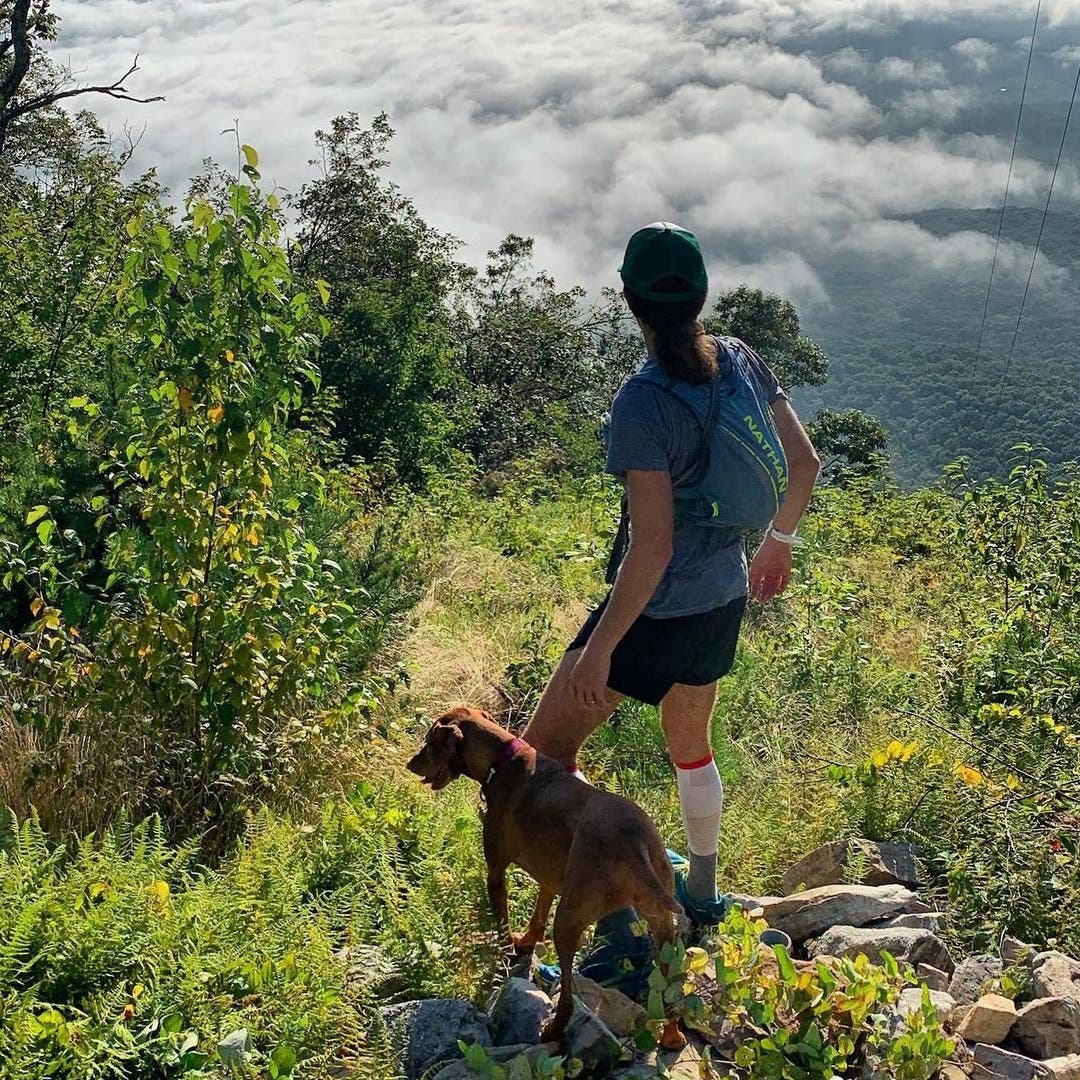

How do you prepare for trail runs with your dog(s) in different conditions, such as hot weather or rugged terrain?
Mike Wardian: We prepare our dogs for different trail conditions the same as we do ourselves. I take a quick look at the weather and might decide on which trail we are doing based on the forecast. I also plan to run around the weather, so in the summer avoiding the heat of the day, and in the winter maybe going for a run with the dogs at midday so it will be a bit warmer.
Garrick and Trish Arends: We are five a.m. runners, so it's usually the coolest part of the day. At times it's still extremely warm for our furry friend, so we make sure to run routes where we can get him water every couple of miles. If we're on a route with no water available, we’ll carry extra water for him. If he is warm and lagging, we’ll let him dictate the pace. We don’t worry about him in cold, snowy conditions as that is his favorite! Heck, he even goes into the river when it's 0 degrees out!
As for rugged terrain, I think running him a couple of days a week on pavement toughens his paws enough to handle any terrain. Sometimes on really rough trails, he’ll back off. We used to just go his pace in those areas, but now we understand he’s picking his way through, and once he has grass, brush, or a smooth trail he flies by us! Over time with his collar, we’ve worked in voice commands, so if he heads into boulder fields, etc., we can just say “nope,” and he turns back onto the trail.
What are some common challenges dog owners face when introducing their pets to trail running? Do you have tips for overcoming them?
Mike Wardian: I think the most common challenge for dog owners when they start trail running is trying to make the experience normal and not overcomplicate things or overdoing it. I want the experience to be special for the dogs but not unusual. The more you can expose your dogs to the outdoors and trails, the more comfortable and familiar they will be with the outings. I think trying to get your dogs out once a week or so on trails is how I'd to make them comfortable with trails and trail running.
Garrick and Trish Arends: Early on with Olly it was teaching him personal space, haha. But with some work, we taught him to pass us with space. So now he is really good about going by us, but with space so as to not clip or trip us up. The next thing is that he gives others space when we encounter them. Unfortunately, he learned about mountain bikes the hard way when he darted out from some bushes in front of a bike and had his foot run over. Ever since then, he now goes waaay around bikers! Haha. With him being such a happy dog that loves everyone, the next thing was to keep him from running head-on with others so he could say hello. It took some work with recall to get him by us, but now he’s free to run and gives others room.
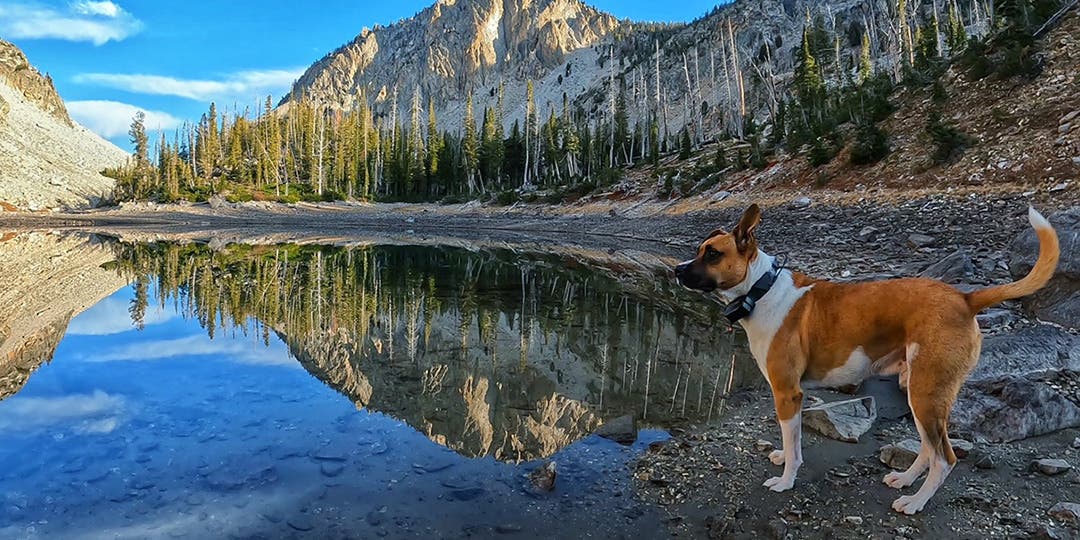
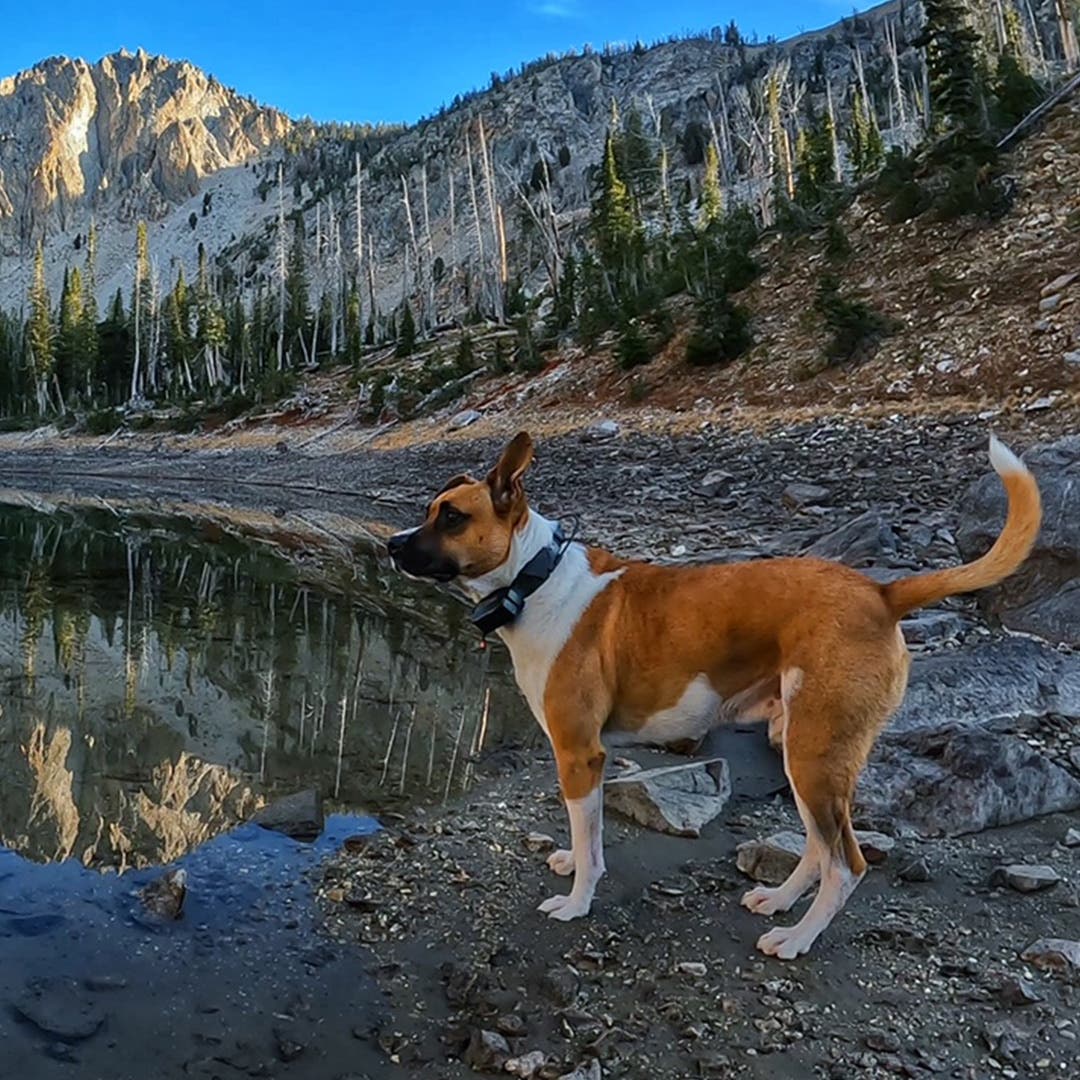
Can you share some memorable experiences or adventures you’ve had while trail running with your dogs?
Mike Wardian: I have had a number of memorable experiences running with my dogs over the years. I think one of my most memorable experiences was running with our previous dogs, Nikki and Maggie (both labs). We came upon a rattlesnake and Nikki ran right up to the snake, which was rattling like crazy, and bopped it. I thought she was going to get bitten, and I was going to have to carry her 5 miles back to the car. That was super scary. Recently, with Rosie and Bash, we were doing a hike and Bash was sprinting after a ball. He ran full-on into a tree. It was crazy. He popped right back up and was okay, but I was for sure thinking we were going to the vet.
Garrick and Trish Arends: Oh boy, we have SO many memorable experiences with Olly and adventuring. Olly is VERY good at finding any animal that will move. He doesn’t necessarily chase, but he’ll jump them so he can watch them run or watch birds fly. It’s super cute to watch his excitement watching them. His newest habit, however, is jumping at bears. He’s jumped at four this year alone, including an eight to nine foot brown bear! Again though, he responds to his collar and comes back to us, but it’s a little nerve-wracking in the moment. Most recently he found a momma mountain goat with a baby that ended up running down a ridge line right at me! Talk about a freakout moment! Haha. This year we were also able to get him on multiple peaks. He loves big views, and surprisingly he’s fairly cautious about exposure and at times finds the better line for me.
What advice do you have for runners who are new to trail running with dogs and looking to get started?
Mike Wardian: I think my best piece of advice for getting started is to make it easy. Start small and grow the experience. You don't have to do a five-hour adventure to start. Fifteen to twenty minutes could be plenty and will be an awesome way to enjoy nature with your pet, especially if you can be somewhere where your dog can be off-leash. I know our dogs love the freedom to come and go as they please.
Garrick and Trish Arends: If you are going to run with your dog off-leash, please make sure your pup is socialized with other pups and people. It will not only make your trail running experience much more enjoyable but will keep you and others safe. I’d suggest investing in a GPS collar. This is not only for the ability to train your pup but for their safety. Being able to control and track them gives you great peace of mind and is great for your pup's well-being.
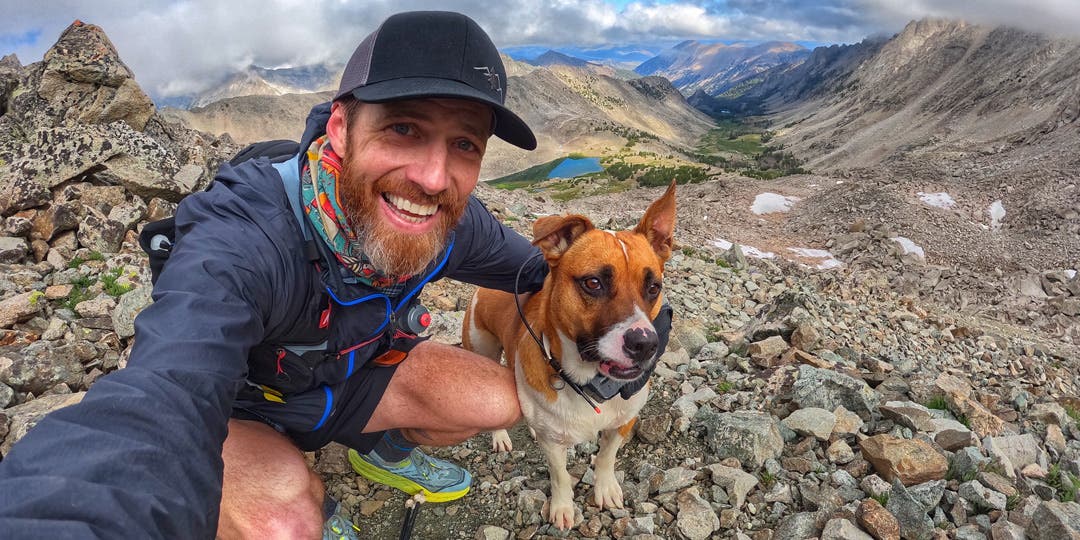
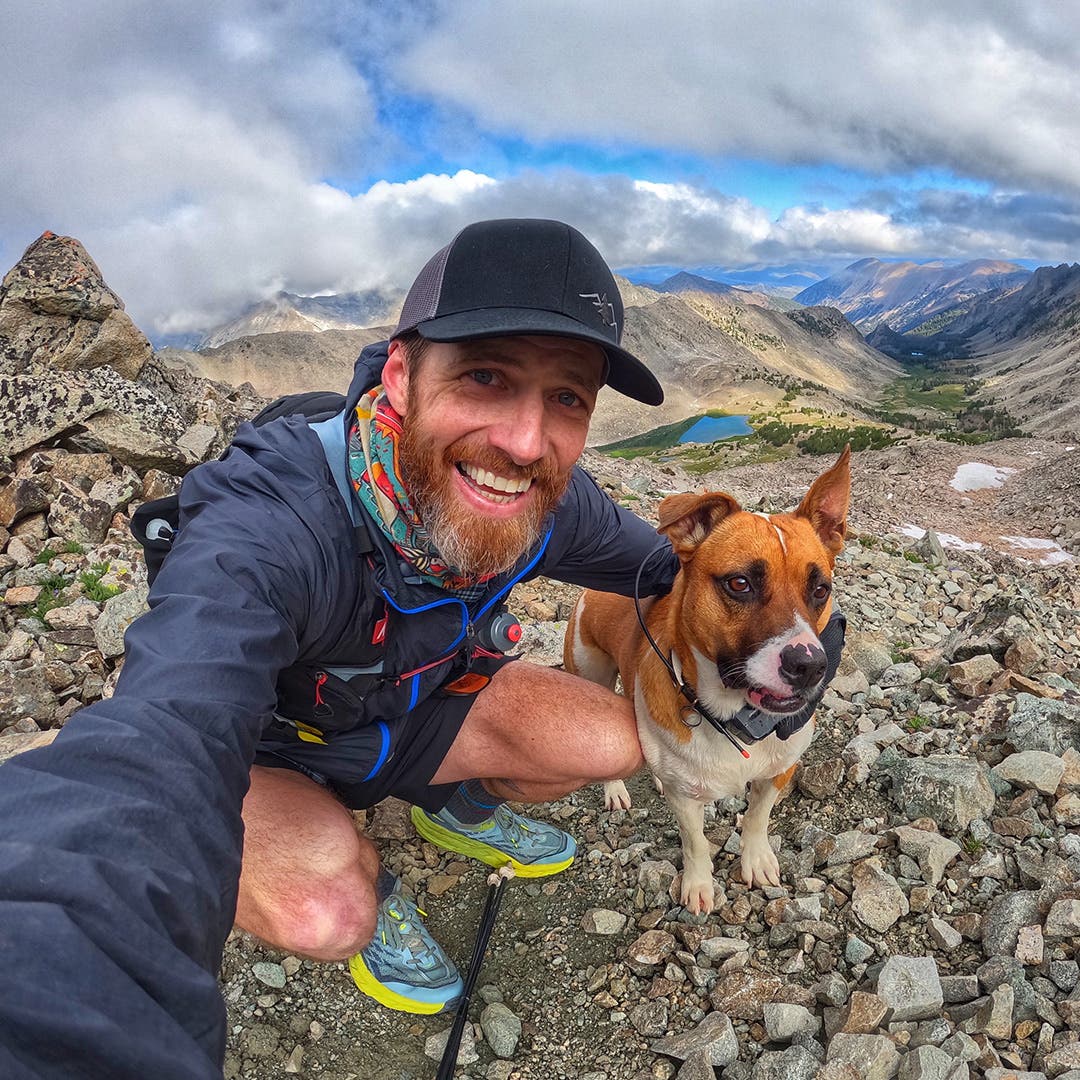
Spending the day with your pup on the trails can be a deeply rewarding experience! With expert guidance from Mike, Garrick, and Trish, you now have the tools and knowledge to embark on safe and enjoyable trail runs with your four-legged friend. So, grab the leash, your favorite trail running socks, and get outside!








